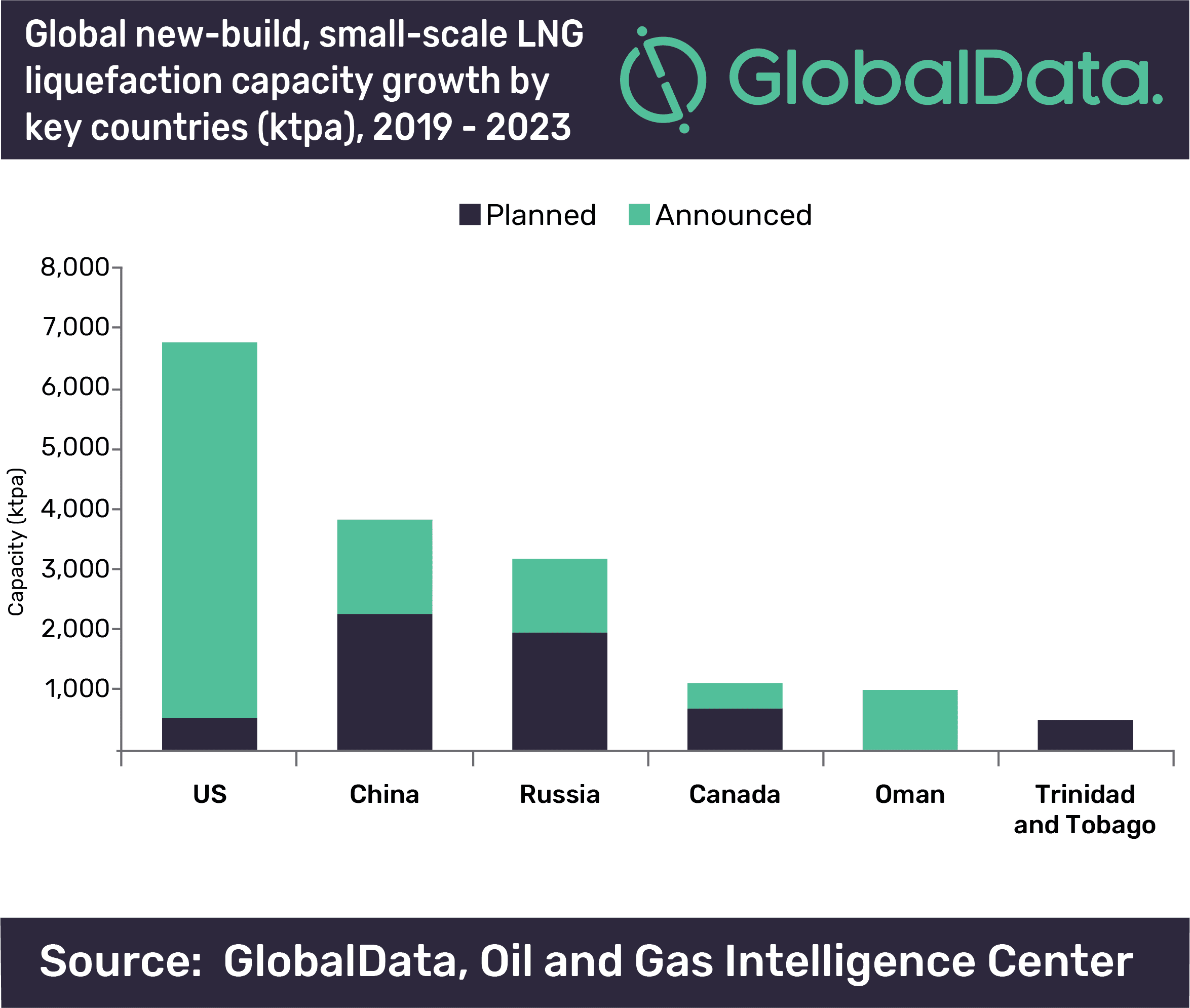The U.S. will drive new-build, small-scale liquefied natural gas (LNG) liquefaction capacity additions globally from planned and announced (new-build) projects between 2019 and 2023, contributing around 40 percent capacity growth by 2023, according to GlobalData, a leading data and analytics company.
The company’s report, ‘Global Small-Scale LNG Liquefaction Capacity and Capital Expenditure Outlook – The US Leads Globally on Capacity Additions and Capital Expenditure Outlook’, reveals that the US is likely to account for a new-build, small-scale LNG liquefaction capacity of 6,760 thousand tonnes per annum (ktpa) from planned and announced projects by 2023.
Dipayan Chakraborty, Oil & Gas Analyst at GlobalData, comments: “The US is expected to add 20 new-build small-scale LNG liquefaction terminals by 2023. Of these, the Browntown and Browntown II terminals will have the highest capacities, each with 2,120 ktpa. The Browntown terminal is expected to start operations in 2020 and the Browntown II terminal in 2021.”

China is the second highest country globally in terms of new-build, small-scale LNG liquefaction capacity additions with 3,810 ktpa by 2023. The Xi an LNG liquefaction terminal accounts for most of the liquefaction capacity additions in the country with 1,400 ktpa by 2023.
Chakraborty adds: “Russia stands third globally with new-build, small-scale LNG liquefaction capacity additions of 3,160 ktpa by 2023. The country is expected to add eight planned and announced small-scale LNG liquefaction terminals during the outlook period.
“The Portovaya LNG liquefaction terminal is the largest upcoming small-scale LNG liquefaction terminal in Russia, with new-build liquefaction capacity of 1,500 ktpa by 2023.”





